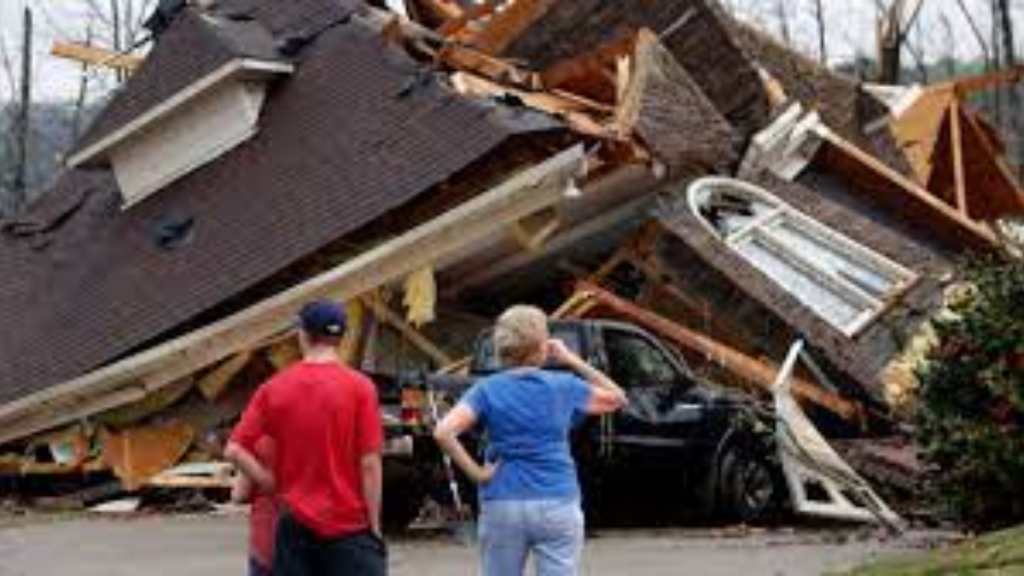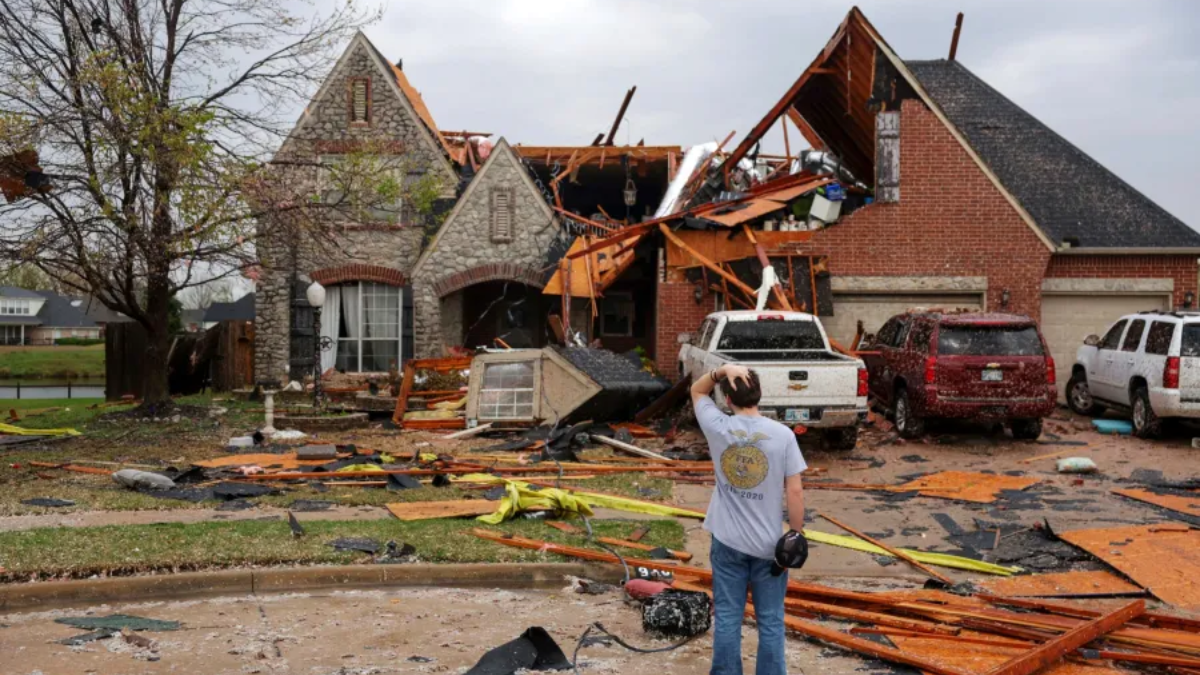Severe storms have swept across the South and Midwest, leaving behind widespread devastation, power outages, and tragic fatalities. As emergency crews work tirelessly to assess the damage and aid those affected, meteorologists warn that more extreme weather could be on the way.
Severe Weather Causes Widespread Destruction
The latest outbreak of deadly storms has impacted multiple states, including Tennessee, Kentucky, Arkansas, Missouri, and Indiana. Tornadoes, heavy rain, and high winds have damaged homes, businesses, and infrastructure.
Rescue teams have been deployed to assist those trapped under debris, and emergency shelters have been established for displaced residents.
Casualties and Power Outages Reported
Authorities have confirmed multiple fatalities and numerous injuries as a result of the severe storms. Strong winds and tornadoes have knocked down power lines, leaving hundreds of thousands of residents without electricity.
Utility crews are working around the clock to restore power, but it may take days before service is fully restored in the hardest-hit areas.
Flash Flooding and Travel Disruptions
Heavy Rains Trigger Flash Floods
Torrential rains have led to severe flooding in low-lying areas, forcing road closures and evacuations. Rivers and creeks have overflowed, submerging homes and vehicles. Local officials continue to urge residents to avoid flooded areas and seek higher ground when necessary.
Air and Ground Travel Affected
Severe weather conditions have significantly disrupted travel across the affected states. Airlines have canceled and delayed flights at major airports, while highway closures have made ground travel hazardous. Emergency response teams are working to clear debris from roads and assist stranded motorists.
Link Between Climate Change and Severe Storms
Meteorologists and climate experts suggest that the intensity and frequency of these storms may be influenced by climate change. Rising global temperatures contribute to increased atmospheric moisture, leading to stronger storms and heavier rainfall.
Scientists continue to study these weather patterns, emphasizing the need for improved infrastructure and preparedness in vulnerable regions.
Emergency Response and Relief Efforts
Rescue Operations Underway
Local, state, and federal emergency agencies, including the Federal Emergency Management Agency (FEMA), have mobilized resources to provide aid and support to affected communities. Shelters have been set up to accommodate those displaced, and relief organizations are distributing food, water, and medical supplies.
Volunteers and nonprofit organizations are also stepping in to assist with recovery efforts.
Government Aid and Disaster Relief
State and federal governments are working together to secure disaster relief funding. Affected residents and businesses may qualify for financial assistance to help rebuild. Those in need can apply for aid through government programs.

How to Stay Safe During Severe Weather
As extreme weather events become more common, experts emphasize the importance of preparedness. Residents in storm-prone areas should have an emergency plan, stay informed about weather alerts, and take proactive measures to protect their families.
Safety Tips for Severe Storms
- Stay Informed: Monitor weather alerts from reliable sources.
- Create an Emergency Plan: Ensure all family members know evacuation routes and safety procedures.
- Prepare an Emergency Kit: Stock up on essential supplies such as food, water, flashlights, and medical kits.
- Seek Shelter Immediately: If a tornado warning is issued, take cover in a basement or interior room away from windows.
- Avoid Flooded Roads: Do not attempt to drive through floodwaters, as the depth and current can be misleading.
Recovery and Rebuilding Efforts
As communities begin the recovery process, officials are focused on rebuilding infrastructure, providing financial aid, and improving disaster response strategies. Many organizations and volunteers have stepped in to help, offering donations and hands-on assistance to those who lost their homes and belongings.
Long-Term Solutions to Mitigate Storm Damage
Experts recommend implementing stronger building codes, improving drainage systems, and investing in climate resilience projects to minimize damage from future storms. Community leaders are also pushing for increased funding for emergency preparedness programs.
Conclusion
The deadly storms that tore through the South and Midwest have left communities in devastation, highlighting the unpredictable and destructive nature of severe weather.
As recovery efforts continue, the focus remains on helping affected residents rebuild and improving preparedness for future storms. Staying informed and proactive can make a significant difference in ensuring safety and minimizing future losses.
For more details on disaster relief and assistance programs, visit the Federal Emergency Management Agency (FEMA).
Disclaimer – Our team has carefully fact-checked this article to make sure it’s accurate and free from any misinformation. We’re dedicated to keeping our content honest and reliable for our readers.
